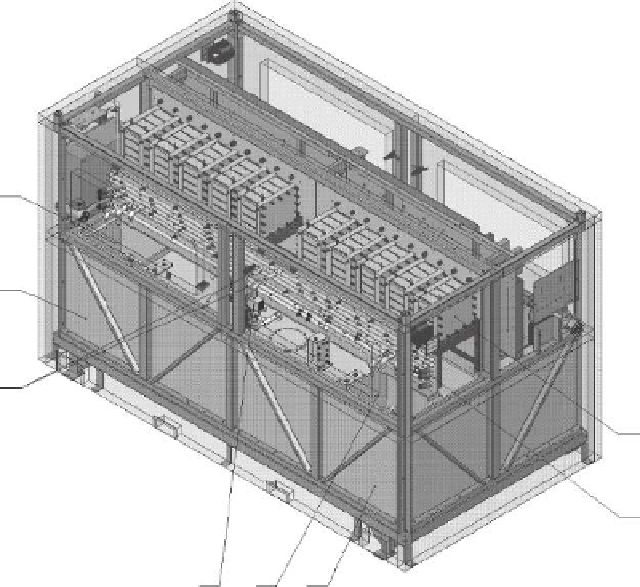Environmental Engineering Reference
In-Depth Information
6
5
4
7
1
8
2
3
FIGURE 6.7
Fluid thermal safety system of Cellstrom's FB10/100. 1. Fluid lines. 2. Positive electrolyte
pumps. 3. Positive electrolyte tank. 4. Return lines. 5. Negative electrolyte tank. 6. Negative
electrolyte pumps. 7. Stacks (also called cell stacks or modules). 8. Rebalance valve. (From
html://www.cellstrom.com)
drainage system. Leakage from the main tank is minimized by a secondary
containment device containing leakage sensors. In addition, because the lines
are kept at pressures of 1 bar above atmosphere, leakage in the lines will not
cause significant spraying. As with all batteries containing water, hydrogen
evolution must be monitored to prevent potential explosions. Fortunately the
amount of hydrogen produced by this system is very small and is easily col-
lected and vented from the tanks.
The FB10/100 is an environmentally friendly system because it contains no
heavy metals. If the electrolyte is kept free of contamination, it can be reused
indefinitely. In addition, 99.9% of the plastics used are non-halogenated and
individual components can be replaced without the need to discard large
components.
Finally the system was designed to require minimum maintenance. The
FB10/100 has a design life of 20 years. While some of the stacks and pumps
may have to be replaced during that lifetime, the fluid and electrical systems

